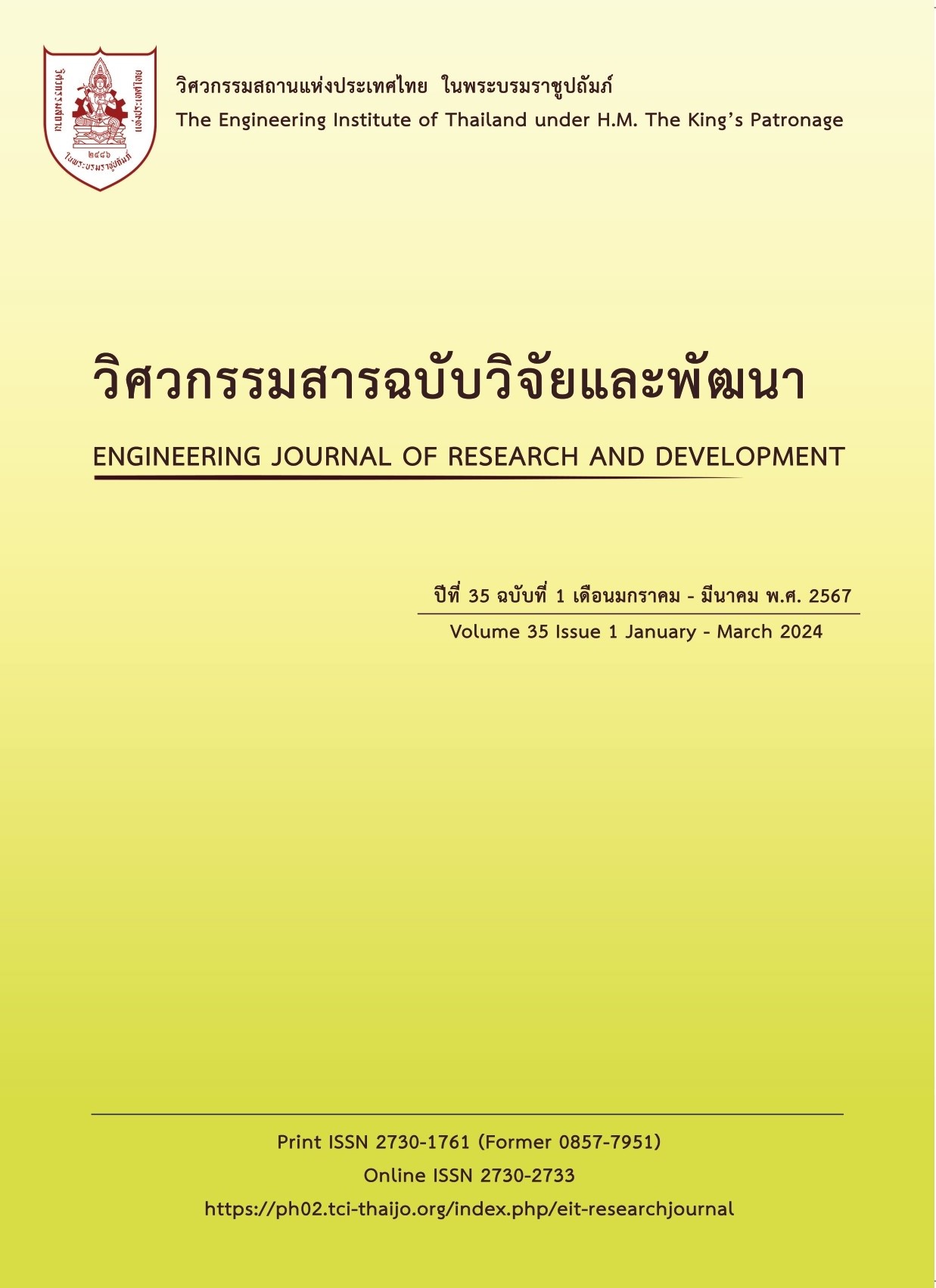LAND USE MAPPING WITH R AND MACHINE LEARNING: ANALYZING PASSIVE AND ACTIVE REMOTE SENSING DATA IN KHON KAEN CITY
Main Article Content
Abstract
This study focuses on the classification of Sentinel-2, Sentinel-1, and their hybrid satellite imagery using the R programming language and a range of machine learning techniques, including K-nearest neighbors (KNN), Artificial Neural network (ANN), Support Vector Machine (SVM), Random Forest (RF), and Decision Tree (DT). These techniques were applied to both passive and active satellite image data from Khon Kaen city in 2020 to evaluate their classification accuracy. Results showed that Sentinel-2 satellite images could be classified with a peak accuracy of 92%, the highest among the tested data sets. We also found that increasing the volume of training data could potentially enhance the classification accuracy for both Sentinel-2 and Sentinel-1 imagery. The findings underscore the potential of using R for further applications in urban growth analysis, given the right data. This highlights the significant role that machine learning can play in advancing our understanding of urban landscapes through remote sensing data analysis.
Article Details

This work is licensed under a Creative Commons Attribution-NonCommercial-NoDerivatives 4.0 International License.
The published articles are copyright of the Engineering Journal of Research and Development, The Engineering Institute of Thailand Under H.M. The King's Patronage (EIT).
References
M. G. C. Gómez, Joint use of Sentinel-1 and Sentinel-2 for land cover classification: A machine learning approach, 2017, 18, pp. 72.
E. Kositsakulchai et al., Machine-learning classification of debris-covered glaciers using a combination of Sentinel-1/-2 (SAR/optical), Landsat 8 (thermal) and digital elevation data, J. Sci. Technol. Kasetsart Univ., 2018, 7 (3) pp. 107365. doi: 10.1016/j.geomorph.2020.107365.
E. Kositsakulchai, S. Yodjaroen, and Y. Phankamolsil, Assessment of the impact of land use change on runoff in Lam Phachi Basin using satellite data and SWAT model [in Thai, with English Abstract], J. Sci. Technol. Kasetsart Univ., 2018, 7 (3), pp. 11–26.
H. Alifu, J. F. Vuillaume, B. A. Johnson, and Y. Hirabayashi, Machine-learning classification of debris-covered glaciers using a combination of Sentinel-1/-2 (SAR/optical), Landsat 8 (thermal) and digital elevation data, 2020, 369. Elsevier B.V.
แทนรัฐ สุจารี, ชาติชาย ไวยสุระสิงห์, พนกฤษณ คลังบุญครอง, อนันต์ ศรีเดช, ชุติมา ไวยสุระสิงห์, and ศิโรรัตน์ พัฒนไพโรจน์, การประยุกต์ใช้ตัวจำแนกแบบจักรแห่งการเรียนรู้ในการวิเคราะห์ข้อมูลภาพดาวเทียมเชิงผสมผสานระหว่างแบบพาสซีฟและแบบแอคตีฟเพื่อประเมิน การเปลี่ยนแปลงการใช้ที่ดิน: กรณีศึกษาเมืองขอนแก่น, วารสารวิจัย มข, 2564, 21 (1) pp. 14–25.
M. N. Murty and R. Raghava, “Linear support vector machines, SpringerBriefs Comput. Sci., 2016, 9783319410623, pp. 41–56. doi: 10.1007/978-3-319-41063-0_4.
Hay AM. Sampling designs to test land-use map accuracy. Photogrammetric Engineering and Remote Sensing. 1979, 45(4), pp. 529-33.
Mundia CN, Aniya M. Analysis of land use/cover changes and urban expansion of Nairobi city using remote sensing and GIS. International Journal of Remote Sensing. 2005, 26 (13), pp.2831-49.
Congaton RG, Green K. Assessing the accuracy of remotely sensed data: principles and practices. 2nd ed. Boca Raton: CRC Press/Taylor & Francis; 2009, p 183.


